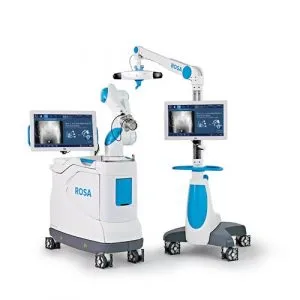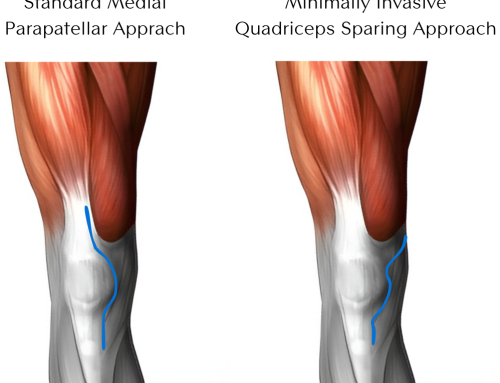
Introduction
Modern medicine continues to break new ground, redefining what’s possible. One field where innovation is unceasing is orthopedic surgery, and one of the groundbreaking procedures reshaping the sector is uncemented knee replacements. As a promising alternative to traditional knee replacements, uncemented knee replacements are gaining traction for their unique benefits and potential to revolutionize orthopedics. This blog post will explore the concept, advantages, limitations, and future of uncemented knee replacements.
What is an Uncemented Knee Replacement?
In traditional knee replacements, surgeons use medical cement to affix the prosthetic components to the patient’s bone. The cement, often composed of polymethylmethacrylate (PMMA), provides an immediate, strong bond that secures the implant, aiding in pain relief and improved function.
Uncemented knee replacements, on the other hand, do not rely on cement for fixation. Instead, they employ a prosthesis with a porous surface, encouraging bone to grow into the implant over time. This bone ingrowth theoretically creates a more natural and durable bond between the implant and the bone. Please look at the Zimmer Persona Total Knee image at the top of this page as a reference.
The Advantages of Uncemented Knee Replacements
Natural Bone Integration: Natural bone integration is uncemented knee replacements’ most significant selling point. Allowing the patient’s bone to grow into the implant may provide a more stable, longer-lasting solution, particularly important for younger, more active patients.
Avoidance of Cement-related Complications: While cemented knee replacements have proven effective over the years, they carry a risk of complications related to the cement itself, such as allergic reactions or loosening over time. Uncemented knee replacements bypass these potential issues.
Potential for Better Long-term Outcomes: Some studies suggest that, in the long run, uncemented knee replacements could provide better function and longevity than their cemented counterparts. However, more research is needed to validate these findings fully.
The Limitations and Considerations
As with any surgical procedure, uncemented knee replacements are not without their drawbacks and limitations:
Longer Healing Time: Bone integration takes time. As a result, the recovery and rehabilitation process for uncemented knee replacements can be lengthier than for cemented procedures.
Not Suitable for All Patients: Patients with poor bone quality, such as osteoporosis, may not be ideal candidates for uncemented knee replacements because adequate bone growth into the implant may not occur.
Limited Long-term Data: While promising, uncemented knee replacements are relatively new. Thus, long-term data on their efficacy and durability compared to cemented versions are only partially available.
Uncemented Knee Replacements in Younger Patients
The problem of knee joint degeneration is not confined to the elderly; younger patients, particularly those with conditions like rheumatoid arthritis or traumatic knee injuries, may also require knee replacement surgery. However, traditional cemented knee replacements in younger patients present a unique challenge: the natural longevity of these replacements may need to align with the patient’s life expectancy or activity level.
Uncemented knee replacements are increasingly being considered for younger patients because of their potential for better long-term outcomes. The biological fixation achieved by bone ingrowth into the implant’s porous surface might provide a more durable solution that can withstand the higher activity levels of younger patients. This could delay, if not eliminate, the need for revision surgery later in life.
Remembering that uncemented knee replacements require healthy bone quality for successful integration, which might only be accurate in some young patients. Therefore, the decision should be individualized based on the patient’s overall health, bone quality, and lifestyle.
Uncemented Knee Replacements and Robotic Joint Replacement Surgery
Robotic joint replacement surgery has been a significant advancement in orthopedic surgery, offering unparalleled precision and control during the procedure. Integrating this technology with uncemented knee replacements presents exciting possibilities for patient outcomes.
In uncemented knee replacements, ensuring the correct alignment and positioning of the implant is crucial for successful bone integration and long-term joint stability. Here’s where robotic surgery steps in. 3D imaging and computer-aided surgical planning allow for the exact placement of the implant. This precision is critical to promoting optimal bone ingrowth, reducing the risk of implant loosening, and potentially improving the overall function of the joint.
Moreover, robotic surgery can enhance the surgeon’s ability to customize the procedure to the patient’s anatomy and biomechanics, potentially resulting in a more natural-feeling knee post-surgery. The minimal invasiveness of robotic surgery contributes to quicker recovery and less post-operative pain, making the overall patient experience more comfortable.

Conclusion
Uncemented knee replacements represent an exciting advancement in orthopedic surgery. While they may not be suitable for all patients, they offer many potential benefits, especially for younger, active individuals who need knee replacement. As with all medical procedures, a thorough discussion with a knowledgeable orthopedic surgeon is crucial to understand the risks, benefits, and whether this procedure is the right option. The future of knee replacement is here, and it looks promising, pushing the boundaries of what’s possible in orthopedic surgery.




